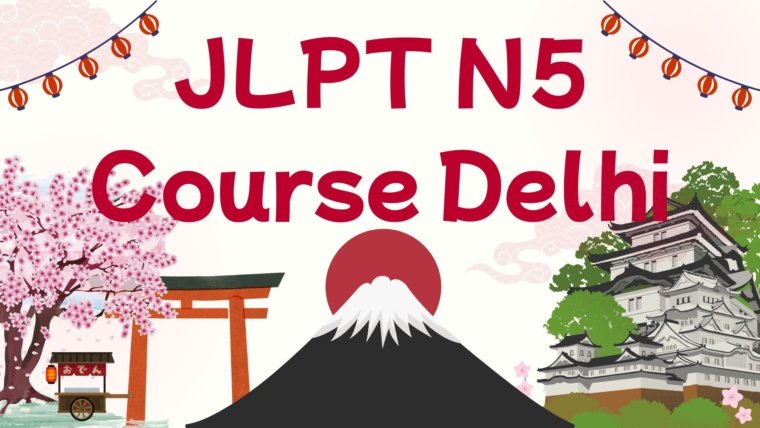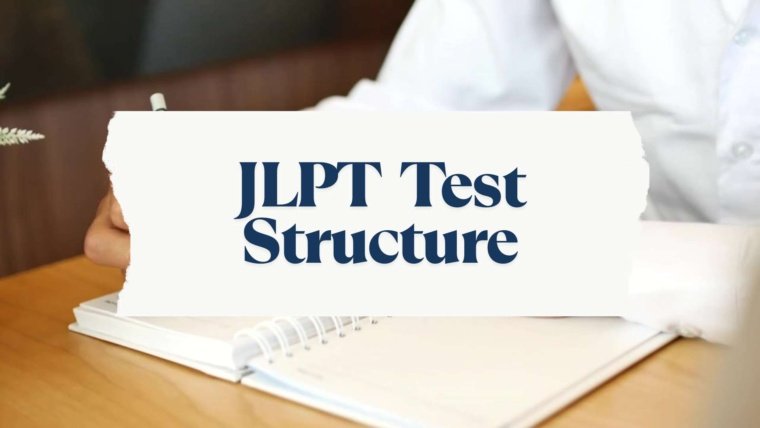Learning Japanese can be both exciting and challenging, and taking the first official step through the JLPT N5 preparation guide is an excellent way to measure your foundational skills. The JLPT N5 preparation guide is specifically designed to help beginners understand the exam format, master essential vocabulary and grammar, and develop practical study strategies. The JLPT, or Japanese Language Proficiency Test, is a globally recognized certification that validates your ability to understand basic Japanese. Starting at the N5 level allows learners to build a strong foundation before progressing to higher levels.
This guide provides a structured approach for learners who are new to Japanese, covering topics such as JLPT N5 study plans, exam tips for beginners, vocabulary lists, grammar points, sample papers, and practice tests online. By following this comprehensive preparation guide, beginners can approach the JLPT N5 exam with confidence and achieve success on their first attempt. Official Website
Understanding JLPT N5 and Its Significance
The JLPT is conducted twice a year and evaluates non-native speakers’ Japanese language proficiency. The N5 level is the beginner stage and focuses on understanding basic Japanese used in daily situations. The exam is suitable for learners who can read and understand simple sentences, communicate in everyday contexts, and recognize basic kanji and vocabulary. Sample Questions for JLPT N5

Importance of JLPT N5:
- Establishes a solid foundation for higher JLPT levels (N4, N3, N2, N1).
- Enhances confidence in reading, writing, listening, and speaking simple Japanese.
- Opens opportunities for academic and professional programs in Japan.
- Provides a tangible achievement for beginners to track their learning progress.
A strong understanding of the exam’s objectives allows learners to plan their preparation effectively and prioritize the most important topics.
JLPT N5 Syllabus and Exam Format
Knowing the JLPT N5 syllabus and format is essential to structure your study efficiently. The exam evaluates three main skills: Language Knowledge (vocabulary and grammar), Reading, and Listening. JLPT N5 Exam Pattern 2025
Exam Structure:
| Section | Duration | Number of Questions | Focus Area |
| Language Knowledge (Vocabulary) | 25 minutes | 30-35 | Kanji, words, and usage |
| Language Knowledge (Grammar & Reading) | 50 minutes | 40-45 | Sentence patterns, comprehension |
| Listening | 30 minutes | 25-30 | Everyday conversations |
The N5 exam assesses your ability to comprehend simple conversations, recognize basic kanji, understand short passages, and apply grammatical rules in context. Understanding the structure enables you to organize your JLPT N5 study plan efficiently.
Creating an Effective JLPT N5 Study Plan
A structured JLPT N5 study plan ensures that beginners cover all essential areas without feeling overwhelmed. A study plan balances learning vocabulary, grammar, kanji, reading, and listening over time. JLPT Level
Sample 12-Week Study Plan:
| Week | Focus Area | Key Activities |
| 1-4 | Vocabulary & Basic Grammar | Learn 300 essential words and 20 grammar points; practice sentence formation. |
| 5-8 | Kanji & Listening | Study 100 basic kanji; practice daily listening exercises; engage with simple Japanese audio. |
| 9-12 | Reading & Mock Tests | Solve JLPT N5 sample papers; attempt full-length practice tests; review mistakes and weak areas. |
Tips for Creating a Personal Study Plan:
- Dedicate 1-2 hours daily to focused study sessions.
- Use flashcards for memorizing vocabulary and kanji.
- Incorporate listening exercises, such as podcasts or Japanese videos with subtitles.
- Regularly test yourself with JLPT N5 practice test online to track progress.
- Adjust your plan based on strengths and weaknesses to maximize efficiency.
How to Pass JLPT N5 Exam: Essential Strategies
For beginners, understanding how to pass JLPT N5 exam involves mastering core concepts, regular practice, and maintaining consistent study habits. The following strategies can significantly improve your chances of success: JLPT Sample Questions
- Prioritize Vocabulary: Focus on learning at least 800–1000 common words used in daily life.
- Understand Grammar Points: Master basic sentence structures, particles, and verb conjugations.
- Listen Actively: Engage with Japanese audio materials daily to improve listening comprehension.
- Practice Sample Papers: Use official JLPT N5 sample papers to familiarize yourself with question formats.
- Focus on Reading: Short passages are tested in the exam; practice reading comprehension regularly.
- Analyze Mistakes: Review incorrect answers to strengthen weak areas before the actual exam.
- Enroll in a Professional Course: Joining a certified JLPT N5 course provides structured guidance and mentorship.
For beginners seeking expert guidance, TLS – The Japanese Language School offers comprehensive training to help you succeed. Contact TLS at +91 8700956038 or tls@teamlanguages.com for enrollment details.
JLPT N5 Vocabulary List
Vocabulary knowledge is critical for passing the JLPT N5 exam. A well-prepared JLPT N5 vocabulary list includes nouns, verbs, adjectives, and adverbs frequently used in everyday communication.
Common Nouns:
- 学校 (がっこう) – School
- 先生 (せんせい) – Teacher
- 時間 (じかん) – Time
- 本 (ほん) – Book
Common Verbs:
- 行く (いく) – To go
- 来る (くる) – To come
- 食べる (たべる) – To eat
- 見る (みる) – To see
Useful Adjectives:
- 大きい (おおきい) – Big
- 小さい (ちいさい) – Small
- 新しい (あたらしい) – New
- 面白い (おもしろい) – Interesting
Using spaced repetition apps like Anki or Memrise can help retain the vocabulary effectively. Consistent review is key to ensuring long-term memory retention.
JLPT N5 Grammar Points
Grammar forms the foundation of Japanese sentences. The JLPT N5 grammar points cover basic sentence patterns, verb forms, and particles necessary to communicate effectively in simple contexts.
Essential Grammar Topics:
- Particles: は, が, に, で, を, と
- Sentence Structures:
- A は B です (A is B)
- Verb + たい (Want to…)
- ~てください (Please do…)
- ~ませんか (Shall we…?)
Example Sentences:
- 私は学生です。(I am a student.)
- 水をください。(Please give me water.)
- 一緒に行きませんか。(Shall we go together?)
Practicing these grammar points with exercises and example sentences enhances both comprehension and practical usage, preparing learners for the exam.
Best Books for JLPT N5 Preparation
Selecting the best books for JLPT N5 preparation can accelerate learning and improve exam readiness. Recommended resources include:
- Minna no Nihongo I – Ideal for beginners; covers vocabulary, grammar, and exercises.
- Genki I – Excellent for grammar explanations and conversational practice.
- Try! JLPT N5 – Exam-focused book with practice questions and tips.
- Nihongo Sou Matome N5 – Compact, structured for daily learning and revision.
- JLPT N5 Official Practice Workbook – Provides real exam-style questions for practice.
Combining these books with professional JLPT N5 course materials ensures systematic learning and effective exam preparation.
Practice with JLPT N5 Sample Papers and Online Tests
Regular practice is essential for success. Using JLPT N5 sample papers and JLPT N5 practice test online helps learners:
- Familiarize themselves with the exam format and timing.
- Improve reading and listening speed.
- Identify areas of weakness for targeted improvement.
Recommended Online Resources:
- JLPT Official Website
- JLPT Sensei
- Nihongo-Pro
- TLS Learning Portal
Consistent practice builds confidence and ensures learners are comfortable with the types of questions they will encounter.
Advantages of Joining TLS – The Japanese Language School
For learners seeking structured guidance, TLS – The Japanese Language School provides expert instruction and comprehensive preparation for JLPT N5.
Why TLS is Ideal:
- Certified Japanese language trainers with extensive experience.
- Comprehensive JLPT N5 course materials, including grammar, vocabulary, and practice tests.
- Flexible learning options: online or in-person classes.
- Personalized feedback and progress tracking.
- Regular JLPT N5 practice test online sessions to enhance readiness.
Learners can enroll today and take advantage of expert mentorship for maximum success. Contact TLS at +91 8700956038 or tls@teamlanguages.com to begin.
Common Mistakes to Avoid During Preparation
Even motivated learners make common errors that can reduce performance. Avoid these mistakes:
- Neglecting listening practice until the last moment.
- Memorizing grammar without context or practical usage.
- Ignoring kanji writing practice.
- Skipping mock tests or ignoring their results.
- Studying irregularly without a structured plan.
A consistent and balanced approach ensures steady progress and increases the likelihood of passing on the first attempt.
Additional Online Resources for JLPT N5 Learners
To supplement your study plan, consider using the following online resources:
- Tae Kim’s Grammar Guide – Free online grammar explanations.
- WaniKani – Kanji learning platform.
- JapanesePod101 – Listening and conversational practice.
- Quizlet – Flashcards for JLPT N5 vocabulary.
- NHK Easy News – Simplified news articles for reading practice.
Using these resources alongside structured classes or textbooks creates a balanced preparation strategy.
Final Tips for JLPT N5 Exam Success
Before taking the exam, keep these JLPT N5 exam tips for beginners in mind:
- Remain calm and focused throughout the exam.
- Skim reading passages to understand the context before answering questions.
- Pay attention to listening sections; focus on key nouns and verbs.
- Manage your time effectively; do not spend too long on one question.
- Avoid last-minute cramming; ensure proper rest before the test.
These practical tips, combined with a structured JLPT N5 study plan, can help learners approach the exam confidently.
Frequently Asked Questions (FAQs – JLPT N5 Preparation Guide)
Q1: How long should I study for JLPT N5?
A: The duration of preparation depends on your prior experience with Japanese. For most beginners, 3 to 6 months of consistent study is sufficient to cover vocabulary, grammar, kanji, reading, and listening skills. Following a structured JLPT N5 study plan ensures that each section of the syllabus is thoroughly covered. Daily practice, even for 1–2 hours, combined with weekly revisions and practice tests, can help reinforce learning and track progress efficiently.
Q2: How many kanji are required for JLPT N5?
A: The JLPT N5 exam focuses on approximately 100–120 basic kanji characters, including simple radicals and commonly used kanji in everyday life. Learning kanji systematically, with reading and writing practice, is essential for recognizing characters during the exam. Using spaced repetition apps like Anki or WaniKani, along with the JLPT N5 course materials from TLS, can make kanji learning much more effective.
Q3: Can I pass JLPT N5 by self-study?
A: Yes, self-study is possible if you are disciplined and follow a structured plan. However, professional guidance can make a significant difference, especially for beginners. Courses like those offered by TLS – The Japanese Language School provide expert instruction, mock tests, and structured JLPT N5 study materials, which help learners avoid common mistakes, improve retention, and boost confidence before the exam.
Q4: What is the passing score for JLPT N5?
A: To pass the JLPT N5 exam, you need to score at least 80 points out of 180 overall, with minimum passing scores required in each section (Language Knowledge, Reading, and Listening). Preparing with JLPT N5 sample papers, online mock tests, and systematic revision ensures that you can meet the passing criteria comfortably. Consistent practice of grammar points, vocabulary, and listening exercises is crucial for reaching this goal.
Q5: Which books are best for N5 grammar?
A: The most effective books for JLPT N5 grammar preparation include:
- Genki I – Comprehensive grammar explanations and exercises for beginners.
- Try! JLPT N5 – Exam-focused with examples and practical exercises.
- Minna no Nihongo I – Covers grammar, vocabulary, and sentence construction systematically.
Using these books alongside JLPT N5 course materials and guided instruction from TLS helps learners understand grammar in context and apply it correctly in the exam.
Q6: How can I improve my JLPT N5 listening skills?
A: Listening comprehension is a vital part of the JLPT N5 exam. To improve your listening skills:
- Listen to simple Japanese conversations daily, such as those in podcasts, NHK Easy News, or Japanese language learning apps.
- Repeat sentences aloud to practice pronunciation and comprehension.
- Solve JLPT N5 practice test online regularly to simulate real exam conditions.
- Focus on understanding key verbs, particles, and common phrases rather than trying to understand every single word.
Consistent listening practice combined with guided feedback from instructors at TLS can significantly improve your performance.
Q7: How important is vocabulary for JLPT N5?
A: Vocabulary is one of the most critical components of the JLPT N5 exam. A strong JLPT N5 vocabulary list of 800–1000 words helps you:
- Understand reading passages.
- Recognize words in listening exercises.
- Construct simple sentences using proper grammar.
Regularly reviewing vocabulary with flashcards, apps, or guided lessons ensures retention. TLS provides structured vocabulary exercises and course materials specifically designed for JLPT N5 learners, helping them build confidence in both reading and listening.
Q8: Are there online resources for JLPT N5 practice tests?
A: Yes. Multiple online resources allow learners to take JLPT N5 practice test online, including:
- Official JLPT website – Offers sample questions and practice tests.
- JLPT Sensei – Provides structured practice and explanations.
- Nihongo-Pro – Features interactive online tests.
- TLS Learning Portal – Offers mock tests and additional resources tailored to N5 students.
Regular online practice familiarizes learners with exam timing, question types, and the pace needed to complete the test efficiently.
Q9: How should I approach JLPT N5 grammar practice?
A: Effective grammar practice requires both understanding and application. For JLPT N5 grammar points:
- Learn particles such as は, が, を, に, and sentence-ending forms.
- Practice forming sentences using learned vocabulary.
- Use exercises from books like Genki I, Minna no Nihongo, or Try! JLPT N5.
- Solve sample papers and mock tests to see how grammar is tested in reading and listening.
Regular practice with feedback ensures grammar is not just memorized but also applied correctly, which is crucial for passing the exam.
Q10: Is it necessary to take mock exams before the JLPT N5?
A: Absolutely. Taking JLPT N5 sample papers and mock exams is essential for several reasons:
- It helps learners understand the exam structure and timing.
- Identifies strengths and weaknesses in vocabulary, grammar, reading, and listening.
- Builds confidence and reduces exam anxiety.
- Provides practical experience for pacing and time management.
TLS provides regular mock tests and guided evaluation, ensuring learners are fully prepared before sitting for the real exam.
Conclusion
The JLPT N5 preparation guide is the foundation for learning Japanese effectively. From building a vocabulary list and mastering grammar points to practicing with sample papers and online tests, every step contributes to exam readiness. A structured JLPT N5 study plan, consistent practice, and professional guidance from TLS – The Japanese Language School can ensure success on the first attempt. Start your journey with TLS to gain access to expert instructors, comprehensive materials, and a supportive learning environment.For enrollment and detailed course information, contact TLS at +91 8700956038 or tls@teamlanguages.com. Begin your journey toward mastering Japanese today.



